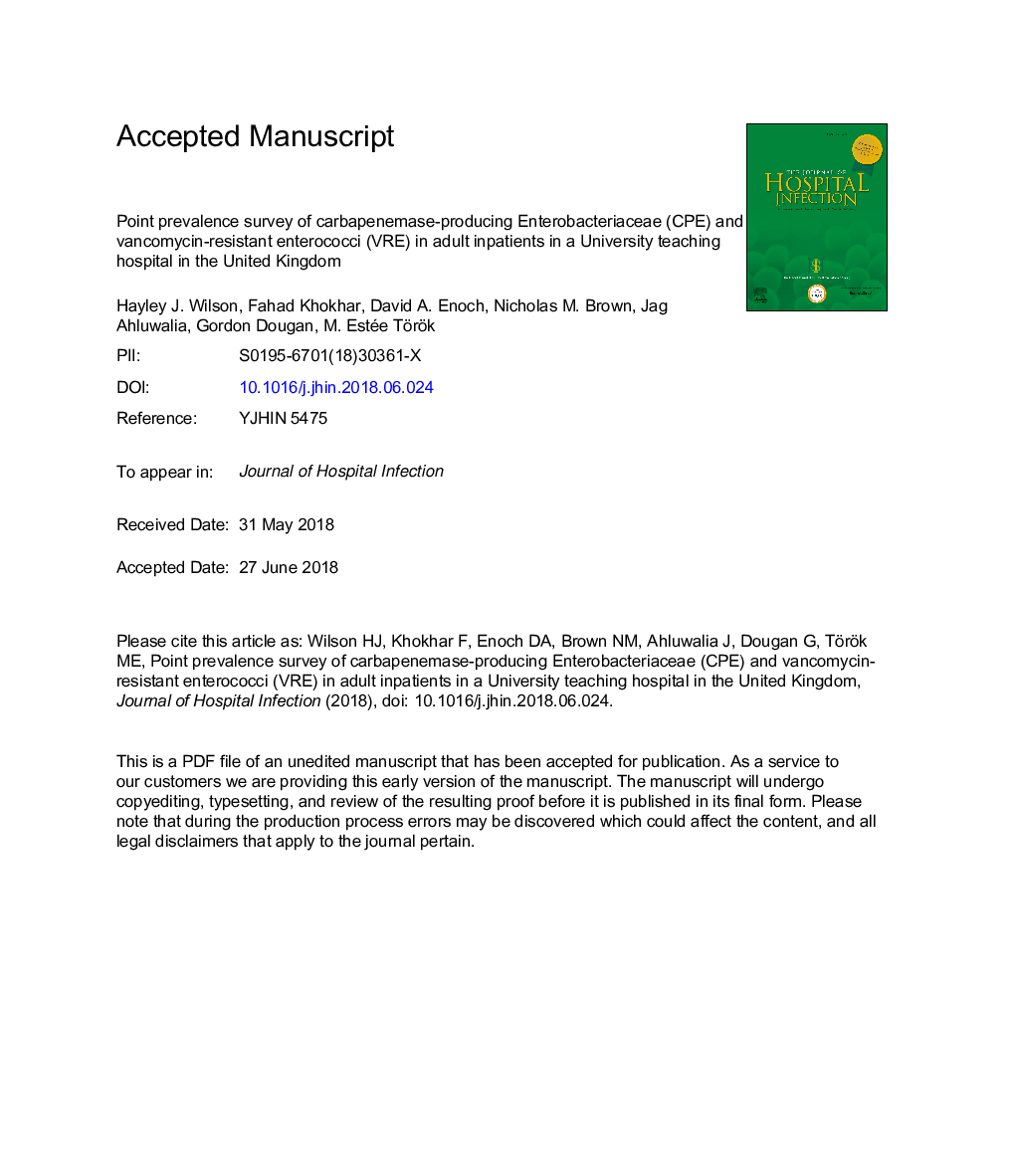| Article ID | Journal | Published Year | Pages | File Type |
|---|---|---|---|---|
| 8957905 | Journal of Hospital Infection | 2018 | 12 Pages |
Abstract
Infections with carbapenemase-producing Enterobacteriaceae (CPE) and vancomycin-resistant enterococci (VRE) are associated with increased morbidity and mortality, but the carriage rates of CRE and VRE among hospital inpatients are unknown. A point-prevalence survey was conducted to determine CPE and VRE carriage rates in hospitalized adults. Eight hundred and eighteen of 960 (85.2%) adult inpatients were invited to participate in the study. Of these, 595 patients (72.7%) consented and provided specimens. Of 540 samples tested, none were positive for CPE. One hundred and thirty of 540 (24.1%) samples were VRE positive, and 34 of 40 (85%) of wards had cases. Universal screening for CPE may not be cost-effective in low-prevalence settings, but targeted screening of high-risk patients should continue. The optimal screening strategy for VRE remains to be determined, as universal screening and isolation is not feasible in the study setting.
Keywords
Related Topics
Life Sciences
Immunology and Microbiology
Applied Microbiology and Biotechnology
Authors
H.J. Wilson, F. Khokhar, D.A. Enoch, N.M. Brown, J. Ahluwalia, G. Dougan, M.E. Török,
